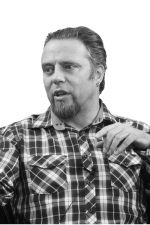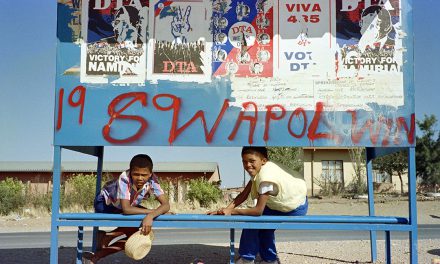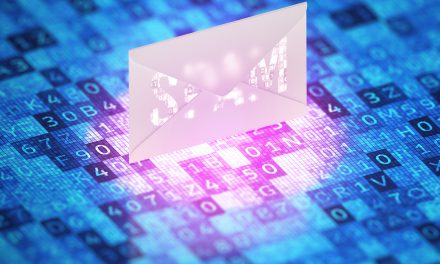Accurate, accessible, and intelligible data is critical to inclusive development and governance in Africa, but the continent has long been riddled with “data deserts” where no sound, evidence-based policies can take root.
Data deserts cover a bewildering array of areas of study that are delineated by those who, on requiring reliable grounds for action, find a dearth of the information critical to their missions – and so are not uniquely an African phenomenon.

The Sahara Desert in Nouakchott, Mauritania on 19 August 19 2019. Photo: Ozkan Bilgin/Anadolu Agency
In the United States, for example, there is a paucity of demographic data generated by lower-income strata that make interventions on combating poverty much harder, while in Britain, a lack of census data on ethnic minorities made it difficult until recently to measure the racially differentiated impact of the coronavirus pandemic.
Yet filling in data gaps can produce remarkable results. In 2020, an article in the journal Nature by Martin Brandt of the University of Copenhagen and his colleagues revealed the result of a painstaking analysis of new satellite imagery covering 1,3 million km² of the western Sahara, Sahel, and sub-humid zone. Counting individual trees and shrubs with crown sizes of over 3m radius, Brand and his team “detected over 1.8 billion individual trees (13.4 trees per hectare), with a median crown size of 12m2…” This vegetation shaded 0,1% of the terrain in hyper-arid areas, but up to 13,3% in sub-humid zones, with 47 trees per hectare.
“Although the overall canopy cover is low,” the scientists wrote, “the relatively high density of isolated trees challenges prevailing narratives about dryland desertification, and even the desert shows a surprisingly high tree density. Our assessment suggests a way to monitor trees outside of forests globally, and to explore their role in mitigating degradation, climate change and poverty.” As desertification drives conflict by cranking up the tension on competition for scarce resources, this is critical new knowledge.
In Africa, states’ often-fragile capacity to generate their own basic data is a cause for concern not only for environmentalists, but for donor agencies, developmental departments, academics, activists, and journalists. The World Bank measures this ability with its Statistical Capacity Indicator (SCI) Dashboard, which scores countries qualifying for development aid – including all of Africa – according to the quality and availability of their source data, the methods used to acquire this data, and the frequency with which this is done.
On the SCI index, Egypt for instance performs well with an overall score of 82.22 – on an exact par with Russia and just ahead of South Africa’s score of 81.11, and China at 80.00 – though its capacity is declining like all Middle East and North African countries since 2018. And while the quality of its source data across indicators such as agriculture, population, and poverty are on par, the frequency of its healthcare reporting has lagged since 2017, while the same happened with tracking gender equality via the ratio of girl to boy child primary and secondary school enrolments over 2008 to 2013.
Its war-ravaged neighbour Libya rates only 25.56 on the SCI index, barely ahead of equally shattered Syria’s 22.22. The impact of the disruption on the remnant of Libya’s capacity to generate data is immediately apparent across most indicators; for example, the tracking of gender equality has lagged in frequency since 2013, with data not collected in cycles under five years.
Civil instability that drags on beyond a decade, as with Central African Republic and Somalia, creates permanent gaps in the statistical record that simply cannot be repaired. In other circumstances, ultra-secretive and authoritarian states such as Equatorial Guinea and Eritrea are equally poor gatherers of useful source information, the CSI index shows. Meanwhile, much of West and East Africa perform relatively well, while the rest muddle along.
The mere existence of even quality data, however, does not mean that it is accessible, for paranoid or grossly inefficient states create their own data-arid realms. The World Wide Web Foundation’s latest Open Data Barometer of 2017 of “how governments are publishing and using open data for accountability, innovation and social impact” rated eSwatini at zero out of 100 (Britain), putting it in the same shuttered state as Yemen. The Barometer has its own blind spots, however, as this latest edition only rates 27 out of 56 African countries (if one includes Somaliland and the Sahrawi Arab Democratic Republic).
But of those rated, Kenya scored highest, ahead of Iceland, while South Africa scored ahead of Poland. Yet there were a worrying number of poor performers who had fallen more than 20 points since the Barometer put out only the previous year: Rwanda scored equal to China, plus Uganda, Senegal, Namibia, Benin, Cameroon, Zambia, Mali, and Zimbabwe.
Sometimes gaps occur where measuring systems from different paradigms clash, which is the case with cadastral maps – the formal plotting of land-ownership boundaries. As Swedish surveyor Tommy Österberg told a 2001 development conference in Kenya, “cadastre in several African countries have been introduced mainly through a colonial administration and served the purpose of securing tenure for settlers in [the tradition] of European law, contrary to the African traditional law and tenure systems. Trials to expand the European cadastre to traditional land have generally not been very successful.”
Cost, lack of modern GPS equipment, and local land-access corruption are often blamed. In Kenya’s case, though it had invested heavily in cadastral mapping, poor maintenance of the system had seen it fall apart. Österberg argued that cadastral maps were not required in extensive rural areas where traditional systems of tenure security remained intact. But they were crucial where these systems were eroded and land demands were rising, especially in areas of migration and urbanisation, and where land markets and investments were developing. In those latter areas, cadastres (registers of the quantity, value, and ownership of real estate) should help protect the rights of women and vulnerable minorities, and promote fair land allocation and access, thus resolving conflicts, he claimed.
Africa’s wealth of natural resources is a vital area for assiduous data-gathering and analysis – but the immense profits generated often sees extractives industries create deliberate data black holes to avoid scrutiny. This is critically important as the Thomson Reuters Foundation’s Wealth of Nations project estimates that Africa loses an estimated $30-60 million annually to illicit financial flows through “aggressive tax avoidance, corruption, smuggling, and other means”. In sub-Saharan Africa, this loss of revenue – often aided and abetted by a lack of data – is equivalent to as much as 11,6% of sub-Saharan trade, the project notes.
For example, Zambia has a very detailed online mining cadastral map of great use to researchers, yet the export of valuable mukula (rosewood) to China remains very poorly monitored. It took a Centre for International Forestry Research employee in China to compare China’s 2016 declared mukula imports from Zambia of about 61,000m³ valued at $87 million with its declared exports to China of only 3,000m³ valued at $900,000 to identify an immense tax shortfall in this one export product alone, one that Zambia can barely afford.
The Natural Resource Governance Institute rates countries on how they administer their extractives sectors. In its latest report last year, Senegal scored best for resources governance in the entire developing world, at 75% for mining and 82% for oil and gas – with the Democratic Republic of Congo scoring the lowest in Africa, at 36% for mining and 38% for oil and gas, which aligns well with those DRC sectors’ bad reputation for skulduggery. Again, there are several African countries not covered in the survey – another data drought.
A large and obvious area of patchy reporting is criminality. Continentally, illegal logging is worth $17 billion a year, untaxed gold exports cost Ghana alone more than $6 billion a year in lost revenue, illegal, unregulated or unreported (IUU) fishing costs West Africa $2.3 billion a year, counterfeit anti-malarial drugs are worth more than $400 million a year in West Africa, cybercrime costs Africa as a whole $895 million a year, and refined fuel theft from Libya is conservatively worth $200 million a year.
Yet these are all partial figures: ENACT, a European Union-funded observatory of transborder crime in Africa, which is partnered with Interpol, cautions in its 2021 index tracking of 10 major criminal markets that a “surge in the cocaine market” is attributable more to “a number of record-breaking cocaine seizures” in West Africa than to detailed knowledge of shipments the authorities had missed. What you don’t know can hurt you.
But African authorities themselves often ensure that even in their criminal justice systems, there is precious little available information. Despite widespread arrests over the past three years during the pacifist “Revolution of Smiles” against the Algerian regime, the state claims that prison population densities and pre-trial detentions have remained static. As human rights activists Farida Bouattoura and Akila Bouacha warn in a 2022 report, “various data sources support a lack of information, transparency, and clarity regarding the actual prison conditions in Algeria. There are no consistent open records or annual statistics.”
The absence of data in Africa is multifarious: from the lack of adequate meteorological information for North Africa – ironically important for European air traffic as the Saharan dust storms that tinted the snows of the Alps orange in February this year demonstrated – to threadbare market research for investors. On establishing itself in many African countries, fast-food giant KFC had to resort to an ungainly combination of staff on the ground with clipboards counting foot traffic and satellite imagery to identify ideal store locations.
Africa’s informal economy – a significant driver of many national economies – is often viewed with trepidation or incomprehension by state officials and private sector entrepreneurs because of the absence of actionable information. In 2018, having researched a story about the crafts sector in Africa, I as the journalist, wound up giving figures to a grateful and amazed South African government official that his neglected sector was roughly three times more valuable than the country’s entire fishing industry in terms of contribution to GDP and to employment. That information should have been in his hands first; sometimes even though the data exists, it is not known by those who should.
Africa In Fact noted in a 2020 report that due to either inhospitable, remote terrain or conflict, fully a third of the continent was either unadministered, under-administered, or run by barely recognised authorities. The devastating implications of this are that this “lawless” territory – larger than all of Canada – is unlikely to produce many useful data. For example, the twilight status of Somaliland and Sahrawi states produced garbled and nonsensical African Centres for Disease Control and Prevention – and thus World Health Organisation – figures on the current pandemic.
Even on extremely basic data like population densities, Catherine Lineard and her colleagues warned in a 2012 report for the PMC journal of the US National Institutes of Health that “existing spatially explicit population data across Africa are generally based on outdated, low-resolution input demographic data, and provide insufficient detail to quantify rural settlement patterns and, thus, accurately measure population concentration and accessibility”.
A 2018 white paper on artificial intelligence co-authored by Nelishia Pillay of the University of Pretoria (UP) notes: “The quality of population data gets to the question of who or what ‘counts’, a question with deep roots in the political economy of societies, ideologies of governments, and troubling implications in the context of AI.”
Yet there are innumerable projects to improve the quality of Africa’s raw-data collection, processing, analysis, storage, accessibility, and sharing, particularly in countries that are investing in the 4th industrial revolution, notably Kenya. While some of this emanates from state institutions – for example, in May last year, four African central banks came together to share data to enable greater access to COVID-recovery financing – most of it comes from private-sector initiatives.
The UP paper recalled the UN Economic Commission for Africa, saying the private sector is increasingly becoming a critical and dynamic player within African data ecosystems “through sharing of non-proprietary data, engaging in brokerage activities, and providing platforms for crowd-sourced or user-generated data sources.” Pillay and her co-authors were of the opinion that an extension and improvement of existing non-proprietary state, academic, private sector and civil society “data ecosystems,” by using cloud computing, promoting dataset interoperability, and incentivising automatic collection and sharing, would help seed Africa’s data deserts.
[activecampaign form=1]
Michael Schmidt is a Johannesburg-based investigative journalist who hasworked in 49 countries on six continents. His main focus areas as an Africa correspondent for leading mainstream journals are emerging and high-end technologies, political developments, conflict resolution and transitional justice, and on the continent’s maritime and littoral spaces.












